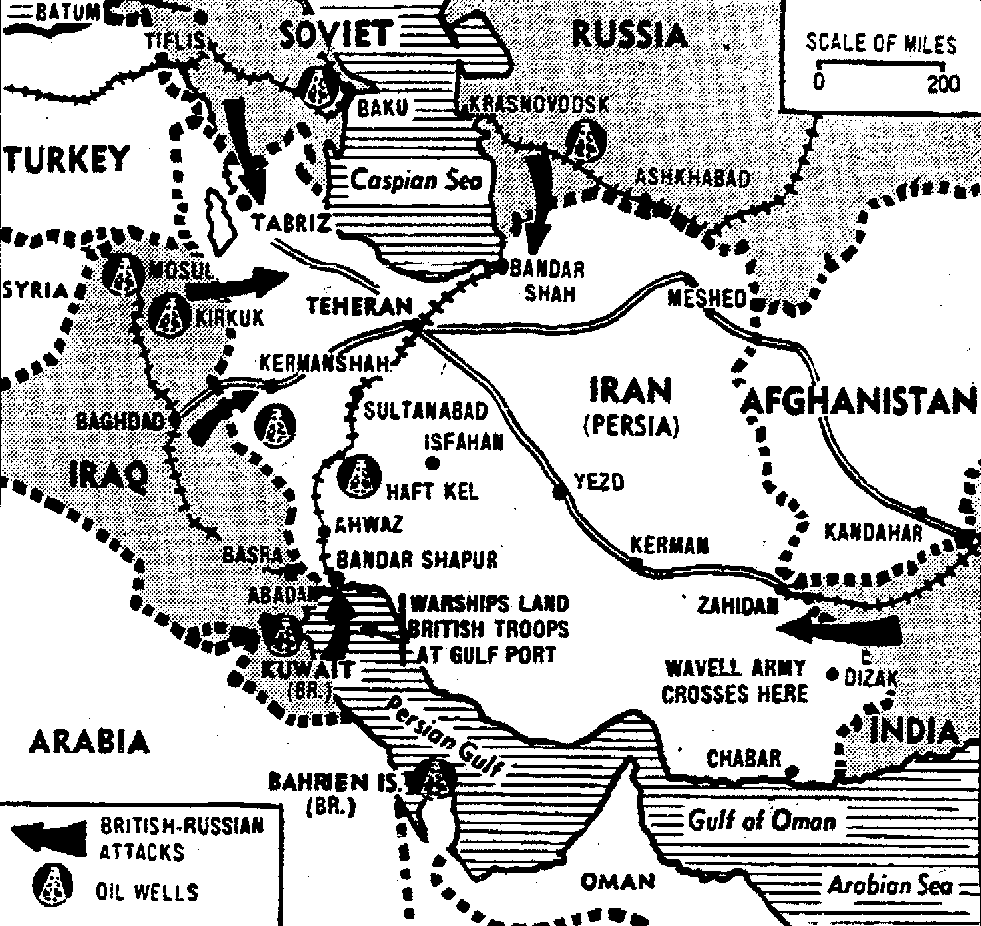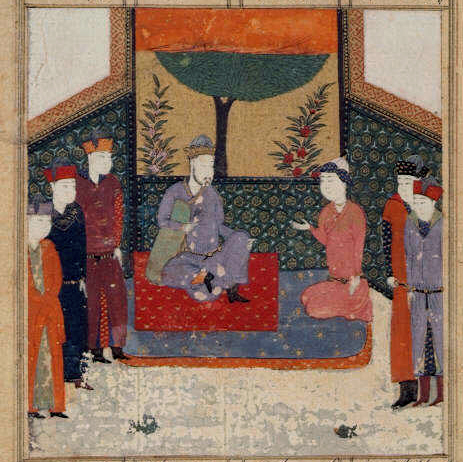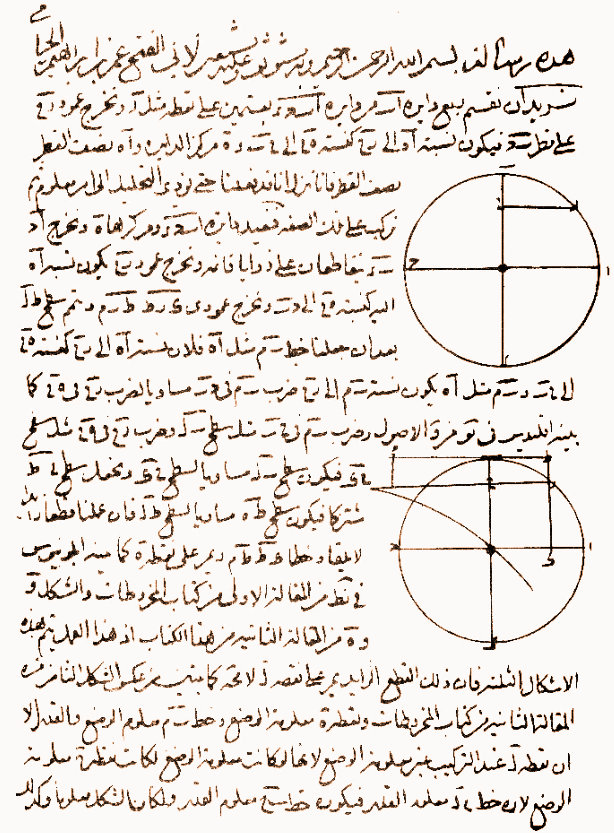|
Quqnūs
Quqnūs () is a 1941 poem by Nima Yooshij. Quqnūs is often referred to as an evolved Afsaneh poem that depicts She'r-e Nimaa'i both in form (rhyme and paragraph) and in meaning (social symbolism). The poem describes a myth of Quqnūs: "It is said that Quqnūs lives a thousand years, and when a thousand years pass and his life comes to an end, he gathers a lot of firewood and sits on top of it and begins to compose and flutter his wings like fire from his wings, He falls into the wood and burns himself with the wood, but from the ashes of his corpse, his chickens come out." In fact, the poet uses an old myth and introduces himself as a Quqnūs that must burn in order for his thoughts and poems to be spread among the people and for other birds to spread it in the world. Context The writing of "Quqnūs" first began in February 1938, and three years later was first published in the " Journal of Music" in 1941, in the midst of World War II and the occupation of Iran. The publication ... [...More Info...] [...Related Items...] OR: [Wikipedia] [Google] [Baidu] |
Nima Yushij
Nima Yooshij or Nimā Yushij (; 11 November 1895 – 6 January 1960), also called Nimā (), born Ali Esfandiari (), was a prominent Iranian poet. He is famous for his style of poetry which he popularised, called ''she'r-e now'' (, lit. "new poetry"), also known as ''She'r-e Nimaa'i'' (, lit "Nima poetry") in his honour after his death. He is considered the father of modern Persian poetry. He died of pneumonia in Shemiran, northern Tehran. Following his will, he was buried in his native village of Yush, Nur County, Mazandaran. Early life He was the eldest son of Ibrahim Nuri of Yush (a village in Baladeh, Nur County, Mazandaran province). He was a Tabarian, but also had Georgian roots on his maternal side. He grew up in Yush, mostly helping his father with the farm and taking care of the cattle. As a boy, he visited many local summer and winter camps and mingled with shepherds and itinerant workers. Images of life around the campfire, especially those emerging from the s ... [...More Info...] [...Related Items...] OR: [Wikipedia] [Google] [Baidu] |
She'r-e Nimaa'i
She'r-e Nimaa'i () is a school of Modernist poetry in Iran that is derived from the literary theory of Nima Yooshij, a contemporary Iranian poet. Nima Yooshij revolutionized the stagnant atmosphere of Iranian poetry with the influential poem Afsaneh, which was the manifesto of She'r-e Nimaa'i. He consciously challenged all the foundations and structures of Persian literature, ancient Persian poetry. The nature of Mazandaran, social criticism, and humor are just a few examples of the themes that Nima Yooshij used in his poems. She'r-e Nimaa'i was the source of inspiration and growth of many great modern Iranian poets, including Sohrab Sepehri, Forugh Farrokhzad, Forough Farrokhzad, Mehdi Akhavan-Sales and Fereydoon Moshiri, Fereydoun Moshiri. She'r-e Nimaa'i has a special place in modern Iranian poetry. It was used for the first colloquial language in Iranian poetry. The shutters became shorter and longer, and a new look was taken at the poem. Although many criticisms were leveled at ... [...More Info...] [...Related Items...] OR: [Wikipedia] [Google] [Baidu] |
Journal Of Music (Iran)
''Journal of Music'' (formerly ''Journal of Music in Ireland'', or ''JMI'') is an Irish music magazine founded in 2000. It "has been a critical voice in Traditional and Contemporary musics since 2000". In 2009 it was relaunched as the ''Journal of Music''. In 2010, the ''Journal of Music'' was the recipient of ''Utne Reader'' magazine's Utne Reader, Utne Independent Press Award for Arts Coverage. References External links * Bi-monthly magazines Classical music in Ireland Defunct magazines published in Ireland Music magazines published in Ireland Magazines established in 2000 Magazines disestablished in 2009 Classical music magazines {{ireland-media-stub ... [...More Info...] [...Related Items...] OR: [Wikipedia] [Google] [Baidu] |
World War II
World War II or the Second World War (1 September 1939 – 2 September 1945) was a World war, global conflict between two coalitions: the Allies of World War II, Allies and the Axis powers. World War II by country, Nearly all of the world's countries participated, with many nations mobilising all resources in pursuit of total war. Tanks in World War II, Tanks and Air warfare of World War II, aircraft played major roles, enabling the strategic bombing of cities and delivery of the Atomic bombings of Hiroshima and Nagasaki, first and only nuclear weapons ever used in war. World War II is the List of wars by death toll, deadliest conflict in history, causing World War II casualties, the death of 70 to 85 million people, more than half of whom were civilians. Millions died in genocides, including the Holocaust, and by massacres, starvation, and disease. After the Allied victory, Allied-occupied Germany, Germany, Allied-occupied Austria, Austria, Occupation of Japan, Japan, a ... [...More Info...] [...Related Items...] OR: [Wikipedia] [Google] [Baidu] |
Anglo-Soviet Invasion Of Iran
The Anglo-Soviet invasion of Iran, also known as the Anglo-Soviet invasion of Persia, was the joint invasion of the neutral Imperial State of Iran by the United Kingdom and the Soviet Union in August 1941. The two powers announced that they would stay until six months after the end of the war with their mutual enemy, Nazi Germany (World War II), which turned out to be 2 March 1946. On that date the British began to withdraw, while the Soviet Union delayed until May, initially citing "threats to Soviet security", followed by the Iran crisis of 1946. The invasion, code name Operation Countenance, was largely unopposed by the numerically and technologically outmatched Iranian forces. The multi-pronged coordinated invasion took place along Iran's borders with the Kingdom of Iraq, Azerbaijan SSR, and Turkmen SSR, with fighting beginning on 25 August and ending on 31 August when the Iranian government, under the rule of Reza Shah Pahlavi, formally agreed to surrender, having alr ... [...More Info...] [...Related Items...] OR: [Wikipedia] [Google] [Baidu] |
The Value Of Emotions In Artists' Lives
''The'' is a grammatical article in English, denoting nouns that are already or about to be mentioned, under discussion, implied or otherwise presumed familiar to listeners, readers, or speakers. It is the definite article in English. ''The'' is the most frequently used word in the English language; studies and analyses of texts have found it to account for seven percent of all printed English-language words. It is derived from gendered articles in Old English which combined in Middle English and now has a single form used with nouns of any gender. The word can be used with both singular and plural nouns, and with a noun that starts with any letter. This is different from many other languages, which have different forms of the definite article for different genders or numbers. Pronunciation In most dialects, "the" is pronounced as (with the voiced dental fricative followed by a schwa) when followed by a consonant sound, and as (homophone of the archaic pronoun ''thee' ... [...More Info...] [...Related Items...] OR: [Wikipedia] [Google] [Baidu] |
Romanticism
Romanticism (also known as the Romantic movement or Romantic era) was an artistic and intellectual movement that originated in Europe towards the end of the 18th century. The purpose of the movement was to advocate for the importance of subjectivity and objectivity (philosophy), subjectivity, imagination, and appreciation of nature in society and culture in response to the Age of Enlightenment and the Industrial Revolution. Romanticists rejected the social conventions of the time in favour of a moral outlook known as individualism. They argued that passion (emotion), passion and intuition were crucial to understanding the world, and that beauty is more than merely an classicism, affair of form, but rather something that evokes a strong emotional response. With this philosophical foundation, the Romanticists elevated several key themes to which they were deeply committed: a Reverence (emotion), reverence for nature and the supernatural, nostalgia, an idealization of the past as ... [...More Info...] [...Related Items...] OR: [Wikipedia] [Google] [Baidu] |
Realism (arts)
Realism in the arts is generally the attempt to Representation (arts), represent subject-matter truthfully, without artificiality, exaggeration, or speculative fiction, speculative or supernatural elements. The term is often used interchangeably with naturalism, although these terms are not necessarily synonymous. Naturalism, as an idea relating to visual representation in Western art, seeks to depict objects with the least possible amount of distortion and is tied to the development of linear perspective and illusionism in Renaissance Europe. Realism, while predicated upon naturalistic representation and a departure from the idealization of earlier academic art, often refers to a Realism (art movement), specific art historical movement that originated in France in the aftermath of the French Revolution of 1848. With artists like Gustave Courbet capitalizing on the mundane, ugly or sordid, realism was motivated by the renewed interest in the commoner and the rise of leftist polit ... [...More Info...] [...Related Items...] OR: [Wikipedia] [Google] [Baidu] |
Symbolism (arts)
In works of art, literature, and narrative, a symbol is a concrete element like an object, character, image, situation, or action that suggests or hints at abstract, deeper, or non-literal meanings or ideas.Johnson, Greg; Arp, Thomas R. (2018). ''Perrine's Literature: Structure, Sound and Sense, Third Edition''. Cengage Learning. pp. 286-7: "A literary symbol is something that means more than what it suggests on the surface. It may be an object, a person, a situation, an action, or some other element that has a literal meaning in the story but that suggests or represents other meanings as well."Kennedy, X. J.; Gioia, Dana (2007). ''Literature: An Introduction to Fiction, Poetry, Drama, and Writing, Tenth Edition''. Pearson Longman. p. 292: " a symbol: in literature, a thing that suggests more than its literal meaning. Symbols generally do not 'stand for' any one meaning, nor for anything absolutely definite; they point, they hint, or, as Henry James put it, they cast long shadows ... [...More Info...] [...Related Items...] OR: [Wikipedia] [Google] [Baidu] |
Attar Of Nishapur
Faridoddin Abu Hamed Mohammad Attar Nishapuri ( – c. 1221; ), better known by his pen-names Faridoddin () and ʿAttar of Nishapur (, Attar means apothecary), was a poet, theoretician of Sufism, and hagiographer from Nishapur who had an immense and lasting influence on Persian poetry and Sufism. He wrote a collection of lyrical poems and number of long poems in the philosophical tradition of Islamic mysticism, as well as a prose work with biographies and sayings of famous Muslim mystics. '' The Conference of the Birds'', '' Book of the Divine'', and'' Memorial of the Saints'' are among his best known works. Biography Information about Attar's life is scarce and has been mythologised over the centuries. However, Attar was born to a PersianRitter, H. (1986), “Attar”, Encyclopaedia of Islam, New Ed., vol. 1: 751-755. Excerpt: "ATTAR, FARID AL-DIN MUHAMMAD B. IBRAHIM.Persian mystical poet.Farīd al-Dīn ʿAṭṭār, in Encyclopædia Britannica, online edition - accessed Dec ... [...More Info...] [...Related Items...] OR: [Wikipedia] [Google] [Baidu] |
Omar Khayyam
Ghiyāth al-Dīn Abū al-Fatḥ ʿUmar ibn Ibrāhīm Nīshābūrī (18 May 1048 – 4 December 1131) (Persian language, Persian: غیاث الدین ابوالفتح عمر بن ابراهیم خیام نیشابورﻯ), commonly known as Omar Khayyam (), was a Persian poet and polymath, known for his contributions to Mathematics in medieval Islam, mathematics, Astronomy in the medieval Islamic world, astronomy, Iranian philosophy, philosophy, and Persian literature. He was born in Nishapur, Iran and lived during the Seljuk Empire, Seljuk era, around the time of the First Crusade. As a mathematician, he is most notable for his work on the classification and solution of cubic equations, where he provided a geometric formulation based on the intersection of conics. He also contributed to a deeper understanding of Euclid's parallel axiom. As an astronomer, he calculated the duration of the solar year with remarkable precision and accuracy, and designed the Jalali calendar, a solar ... [...More Info...] [...Related Items...] OR: [Wikipedia] [Google] [Baidu] |







